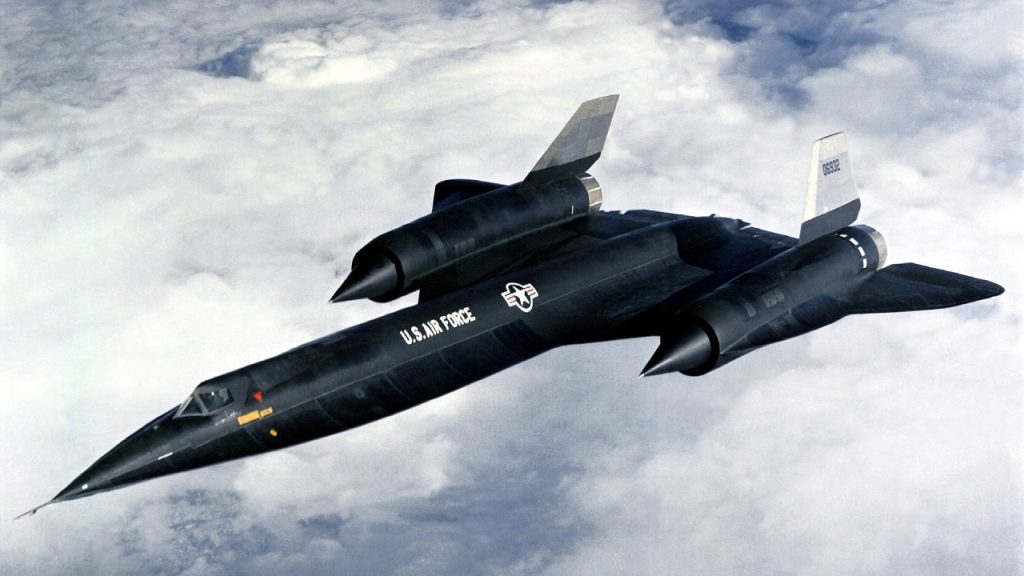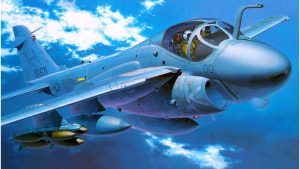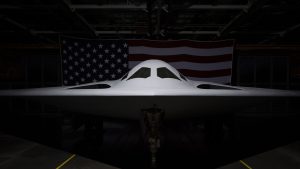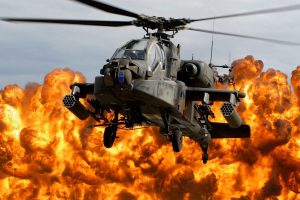Despite its incredible speed, it canceled the A-12 Oxcart program in December 1966 to make space for the more secure SR-71 Blackbird.

An air-to-air left front view of a A-12 aircraft. Erroneously identified as Y-12 in the source, but Serial Number 06932 is a A-12 (see en:Lockheed A-12). This aircraft was lost over South China Sea on June 6, 1968.
“Indeed, the CIA had its own SR-71 spy plane; they called it an A-12 Oxcart and established an advisory committee to investigate potential replacements for the sluggish and fragile U-2 Dragon Lady when CIA planners wished to upgrade its airborne surveillance capabilities. Project Gusto’s committee debated two different designs: the delta-winged Convair Kingfish and the spear-shaped Lockheed A-12, and built each plane for speedy, high-altitude surveillance over the USSR and Cuba.
Despite the Kingfish’s reduced radar signature, the CIA preferred the A-12 due to its superior specs and the cheaper projected cost of its development program. Moreover, Convair’s B-58 Hustler deliveries had been both sluggish and costly. Conversely, Lockheed could produce its U-2 on schedule and under budget. In addition, Lockheed successfully managed a “dark” project (the U-2). Moreover, the Gusto Project would fall under the category of “dark” projects.
In 1962, under the codename “Project Oxcart,” Lockheed’s proposal was chosen, and manufacturing of the A-12 began. The A-12 was eventually given the code Oxcart, randomly drawn from a list of CIA code names. The A-12’s crews, however, gave the plane another moniker: Cygnus, after the swan constellation in the Milky Way.
Performance-wise, the A-12, the forerunner of the legendary SR-71 Blackbird, was decades ahead of its predecessors and much more spectacular than the Blackbird itself.
The service ceiling for the 101-foot craft was 85,000 feet, and the vessel could climb at a rate of 11,800 feet per minute.
The Oxcart was based in Area 51 because information about the plane and its cutting-edge specifications needed to be protected. The first-ever accident of an A-12 based in Area-51 was a major incident highlighting the program’s secrecy.
The test pilot Kenneth Collins crashed in Wendover, Utah, on May 24, 1963, after taking off from Area 51. Collins got lucky and managed to eject without incident. Collins called his team at Area 51 after being picked up by a truck driver and taken to a highway patrol office.
Collins avoided raising too much suspicion by performing testing at low altitude while wearing a conventional flight suit rather than the future space suit he would have needed for high-altitude tests. If Collins had suddenly risen from the desert dressed as a spaceman, the truck driver and the police would have had a few more questions. The CIA’s efforts to divert suspicion were thorough.
Locals told two farmers that the downed plane was carrying nuclear weapons.
Authorities in the area and a passing family were each offered $25,000 in cash and warned to remain silent. The crashed plane was widely reported to have been an F-105 Thunderchief, a designation it also bore in official records. Bulldozers removed the crash site. During his debrief, Collins was hypnotized and given a sodium pentothal “truth serum” to ensure he had told the truth about the crash.
They hid Oxcart’s existence from the public eye and wouldn’t officially expose the program for another three decades.
Collin’s disaster in 1963 was not the only one involving the A-12.
The safety record of the boundary-pushing airframe quickly became patchy. In 1964, an A-12 plane went down on approach because a pitch-control system froze, causing a roll at only 500 feet in altitude. The pilot ejected with a 45-degree bank and less than 200 feet in the air. He managed to stay alive despite everything.
After around 30 seconds in the air, an A-12 crashed in 1965 after becoming uncontrolled. Another time, the pilot made it out alive. In 1967, the first person to die on the Oxcart happened when an A-12 ran out of fuel.
Six of the A-12s out of fifteen were lost in accidents.
A-12s were supposed to fly sorties over the USSR and Cuba but were never put into service. However, only sent it to Asia, where it flew three flights over North Korea and two over Vietnam.
To make room for the SR-71 Blackbird, a two-seater, heavier, slower, lower-flying version of the A-12, the A-12 Oxcart program was canceled in December 1966. After decades of service, the SR-71 was retired in the late 1990s due to budget cuts following the end of the Cold War. The A-2 was meant to replace the U-2 Dragon Lady, but the U-2 is still flying.






